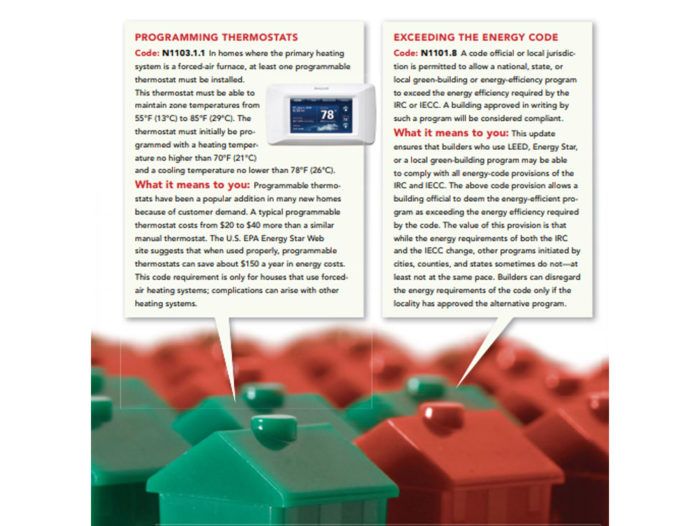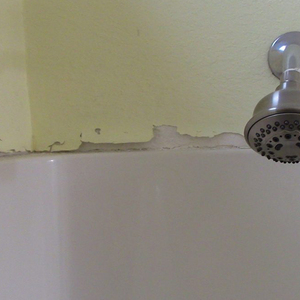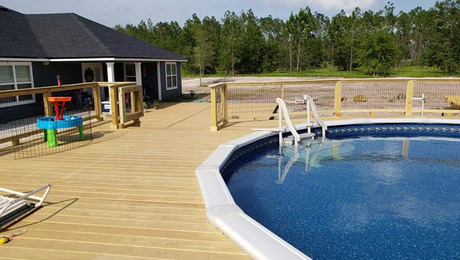Green Yesterday, Code Today
Thanks to the green-building movement, energy efficiency is becoming a mainstay in the IRC and the IECC. But what does it mean to you?

Synopsis: Energy-efficiency updates have become part of the major building codes, but what does that mean for you? Building-code expert and building official Lynn Underwood takes a look at what to expect with the newest code revisions, which include performing blower-door tests; insulating mass walls; using more efficient windows; reducing the size of cathedral ceilings; installing vapor retarders; insulating mechanical pipes; programming thermostats; exceeding the energy code; and using more efficient lighting. This article also includes a sidebar in the PDF below on deciphering and navigating the building code.
New homes built using the recently released 2009 International Residential Code (IRC) or International Energy Conservation Code (IECC) will be more energy efficient than those built to previous standards. As a result, the process of building a house could become a bit more complex and, in some cases, a bit more expensive.
While construction-related energy codes flourished in the 1990s, they were conceived and grew during the energy crises and subsequent green building movement of the 1970s. Recent spikes in energy costs have increased the attention on codes that limit energy waste. Those same energy-price increases also gained the attention of President Barack Obama, who made energy efficiency central to his stimulus package, specifying the need to improve energy efficiency in 2 million homes.
The 2009 building codes reflect practices that not only boost energy efficiency, such as air-sealing and increasing insulation, but also address sustainable building practices, such as moisture control. Here, I’ve highlighted what I think are the 10 most significant energy-related code changes to the 2009 editions of the IRC and the IECC.
You help to create the code
Anyone can submit a legitimate suggestion to improve a building code. Of course, the process is a bit more complex than it sounds. To propose a code change, fill out the appropriate forms found at www .iccsafe.org and submit them (along with supporting rationale) to the International Code Council. Proposals are considered during public hearings, which take place every nine months with the appropriate committee (for example, building, plumbing, or mechanical). These committees may accept, adjust, or dismiss the proposed code. After several other votes and committee hearings, your proposal will be presented to the voting membership of the ICC in what’s called final-action hearings.
Proposals that pass this hurdle then are compiled into a new published code every three years. This new book is called the model code. The code doesn’t become law until an authority having jurisdiction (city, county, or state building departments, for example) adopts it. In almost all cases, this adopting locality usually modifies the code to reflect local interests. So for all the items discussed in national publications such as Fine Homebuilding, the adopting jurisdiction has the final word.
For more details on the 10 most significant energy-related code changes, click the View PDF button below.

























